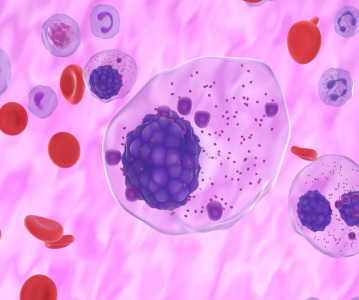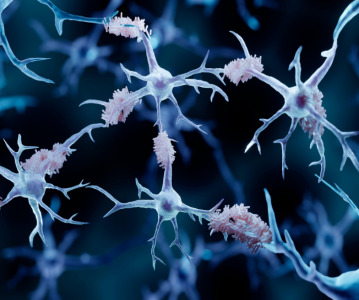PhotoPharmics announces new discovery may have a major impact on treating Parkinson’s disease through the eyes

Recent discoveries about the eye’s involvement in Parkinson’s offer new hope to the millions of people who suffer from the disease.
Until recently, the outlook for Parkinson’s disease (PD) patients has been fairly dim. But recent discoveries about the eye’s involvement in Parkinson’s offer new hope to the millions of people who suffer from the disease.
For over half a century, researchers have only been able to make small improvements in symptoms by looking at just the motor center in the brain. Now they are looking outside the brain for clues to the cause of Parkinson’s and eye research may bring the breakthrough science has been looking for. Retinal tissue is similar to brain tissue and the two are directly connected. “It’s as if the eyes act as a thermostat or switch for the brain,” said Dan Adams, Chief Science Officer at PhotoPharmics, the research company specializing in treating Parkinson’s through the eyes. “The eyes are the way the brain knows how to react to its environment. That’s how the brain changes its chemistry to become active and energetic during the day, or to know when to withdraw and prepare for sleep. Dopamine is one of the chemicals the brain uses, and dopamine levels depend a great deal on what happens in the eyes.”
Scientists found that when the motor center in animals’ brains was damaged, corresponding damage happened in the animals’ eyes within only a few weeks. This was the first evidence to show that the eyes and the brain’s motor center are connected. Researchers then wondered whether damaging the eyes could also cause the same type of damage to the brain. If this were true, it would show for the first time that Parkinson’s might not always start in the brain, but may start in the eyes.
In a series of experiments, researchers placed several toxins known to cause Parkinson’s into animals’ eyes, in amounts that were too small to diffuse into the brain. In each case, the animals developed Parkinson’s. “This was really the smoking gun we were looking for,” said Adams. “For the first time we discovered a pathway that can cause the disease. This opens the door to find better tools to treat Parkinson’s.”
Using the eyes as a treatment pathway, scientists delivered minute amounts of dopamine and other medications to the eye. The treatments resulted in rapid symptom recovery in the animals. Subsequent studies delivering drugs that block dopamine made symptoms worse. Because dopamine in the eye is activated by light, researchers experimented by administering light to the animals’ eyes and found a two-fold improvement over medication.
These discoveries led to research in humans with specialized phototherapy. Preliminary studies have shown dramatic symptomatic improvements. “We are cautiously optimistic,” Adams commented. “Treatment in a clinic can look promising, but results have to be verified in a double blinded study.” A pivotal, double-blind study delivering specialized phototherapy is currently underway in the US and Europe, and should be completed by September of 2016. “If we’re successful, this would be the most significant advancement in Parkinson’s disease since the discovery of dopamine drugs in the 1960s.”
Related News
-
News BioNTech to begin mRNA vaccine manufacturing in Rwanda by 2025
German biotechnology company BioNTech has stated their intentions to begin production at their mRNA vaccine factory in Rwanda by 2025, which will mark the first foreign mRNA vaccine manufacturing site on the continent of Africa. -
News Identifying Alzheimer’s Disease biomarker proteins with whole blood tests
A University of Manchester spin-out pharmaceutical company, PharmaKure, has reported successful study results for the quantification of Alzheimer’s Disease biomarker proteins with a whole blood test. -
News Bill & Melinda Gates Foundation to boost mRNA vaccine initiatives in Africa with USD $40m
To address vaccine inequality and accessibility issues, the Bill & Melinda Gates Foundation aims to deliver USD $40m to various biotech companies and vaccine manufacturers in support of mRNA vaccine development. -
News CPHI Podcast Series: Exploring neurological frontiers in Alzheimer's and beyond
The next episode of the CPHI Podcast Series delves into the science and background behind some recent developments in the field of Alzheimer's disease and neurological disorders. -
News Is patient centricity the future of pharmaceutical manufacturing?
In this interview with Sandra Sánchez y Oldenhage, President of PharmAdvice, she speaks to the importance of considering patients in the manufacturing stages of the pharmaceutical supply chain, and how it can redefine healthcare. -
News CPHI Podcast Series: How to leverage AI for Drug Discovery
Artificial intelligence is the topic of debate in the latest episode from the CPHI Podcast Series, where Digital Editor Lucy Chard speaks with Bill Whitford of DPS Group about the integration of AI in healthcare. -
News Pfizer forges ahead with blood cancer therapy after approval from FDA
Pfizer gains accelerated approval from the US FDA for their new bispecific antibody therapy for multiple myeloma, set to address an unmet need for patients. -
News Alzheimer's drug donanemab deemed effective in landmark clinical trial
Results from the TRAILBLAZER-ALZ 2 Randomised Clinical Trial into the use of donanemab to treat early symptoms of Alzheimer’s disease have been analysed.
Position your company at the heart of the global Pharma industry with a CPHI Online membership
-
Your products and solutions visible to thousands of visitors within the largest Pharma marketplace
-
Generate high-quality, engaged leads for your business, all year round
-
Promote your business as the industry’s thought-leader by hosting your reports, brochures and videos within your profile
-
Your company’s profile boosted at all participating CPHI events
-
An easy-to-use platform with a detailed dashboard showing your leads and performance







